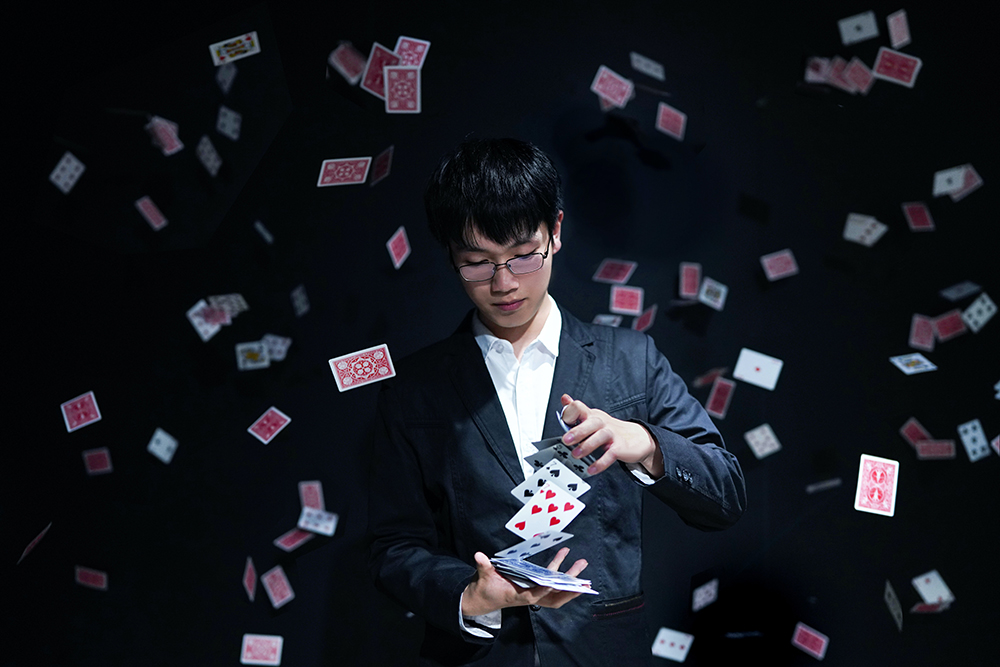Victor Mids, who has been making a TV show called Mindf*ck since January 2015, is a modern illusionist. Whereas other magicians (such as spoon-bender Uri Geller) openly claim to rely on higher powers, Mids admits he does not have magic powers. Rather, he bases his acts on neuroscience.
In fact, this holds true for all magicians. Optical illusions are key to many of a magician’s tricks. Your brain tries to see the world as accurately as it can, but at times it fails – and illusionists are keen to make use of those failures.
Rubber pencil
Take the simple rubber pencil trick: If you take the centre part of a pencil between your thumb and index finger and quickly move it up and down, it will look like the ends of the pencil are flapping up and down. Ruben van Bergen, doctoral candidate on visual perception at the Donders Institute, explains that this phenomenon comes down to differences between brain cells.
Brain cells await their turn
When a light signal travels from your retina to your brain, it is transmitted from brain cell to brain cell. This happens according to a strict hierarchy: first come the most simple nerve cells that only see dots of light. Cells that respond to more complex shapes, such as stripes or corners, will receive their input later – and this input is the output of the more simple nerve cells.
Middles and ends
Now, the cells that respond to ends of lines (so-called end-stopped cells) function only after the cells that perceive the middle part of a line. This means that your brain will process the ends of the pencil later than the part close to your fingers.
If you move the pencil slowly, you won’t notice this difference. But if you move the pencil quickly, the ends of the pencil seem to be delayed. This will make it look like the pencil is bending, even though it is as straight as it has always been.
Escape from illusions
By understanding the peculiarities of our brain, we can understand how optical illusions arise. It will, however, remain impossible to free ourselves from such illusions, because we can’t change the way our visual system works.
Moreover, Victor Mids uses a lot more than just neuroscience in his illusions. In a Dutch interview with our colleagues at Vox Magazine, Ruben explains that a lot of Mids’ tricks can’t be explained, even with the best of science.
Maybe that’s for the best. Otherwise illusionists would be without a job, and we would be left without anything to marvel at.
During the summer we republish some of our best blogs that have only been published in Dutch. This is a translation of the formerly published Donders Wonders blog post: Hoe een goochelaar je brein misleidt
Credits
Original author: Jeroen van Baar
Translator: Wessel
Editor: Rebecca
